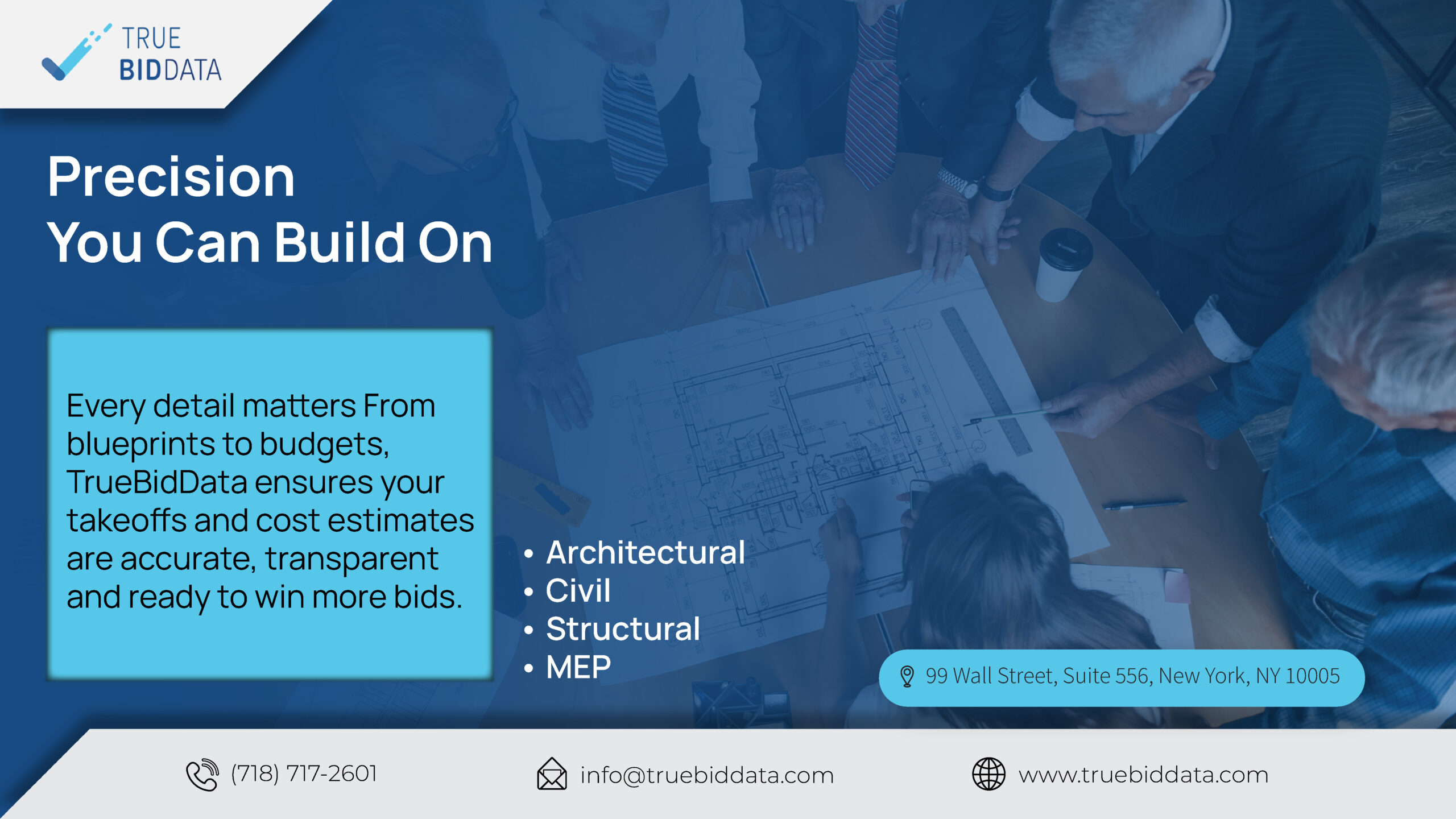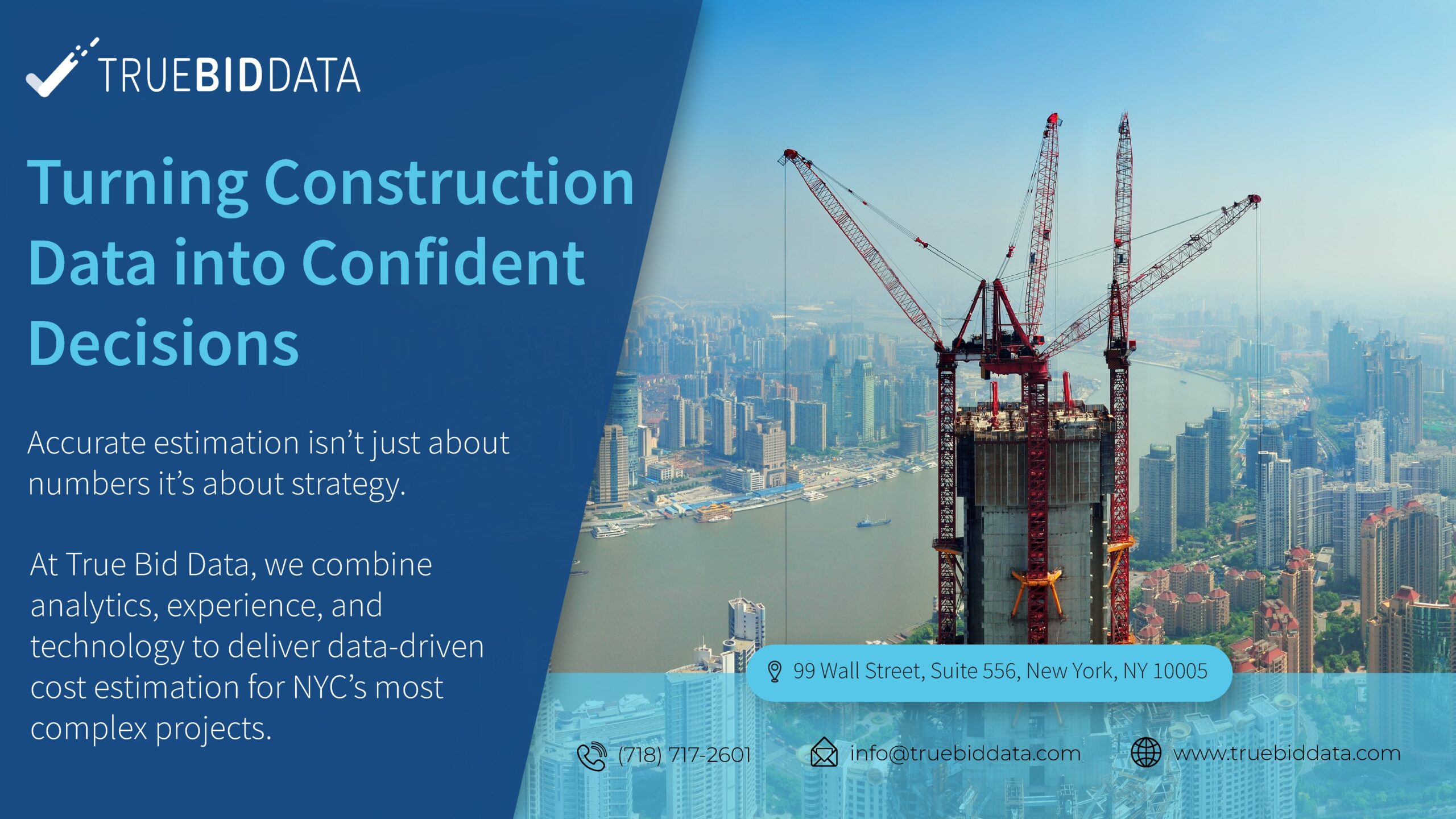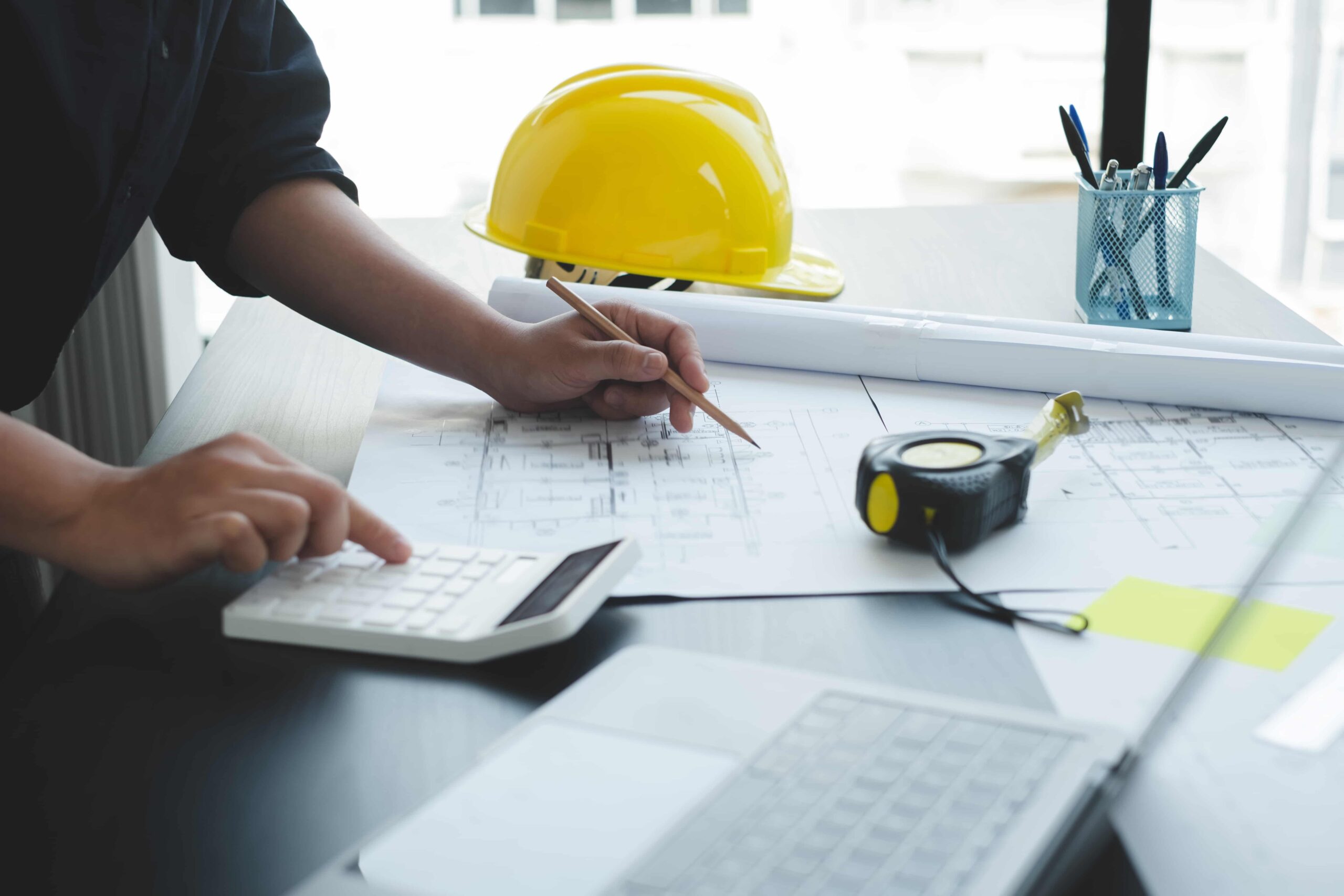
The cost estimation of construction is the bridge between vision and execution—the process that turns an idea into a financially viable project. In New York City, where regulations, logistics, and market volatility create constant challenges, accurate cost estimation defines whether a project stays profitable or spirals out of control.
At True Bid Data, we see cost estimation not just as a technical process, but as a strategic discipline rooted in data analysis, digital tools, and local market intelligence. It’s where precision meets practicality—allowing NYC contractors and owners to build smarter, faster, and more efficiently.
Understanding the Cost Estimation of Construction
In simple terms, the cost estimation of construction involves predicting all expenses necessary to complete a project. It encompasses direct costs like labour and materials, as well as indirect costs such as overhead, equipment, permits, and contingencies.
But in New York City’s high-stakes environment, the process extends far deeper. It’s about translating evolving designs, strict building codes, and fluctuating market conditions into an actionable budget. A solid estimate gives decision-makers financial clarity long before the first brick is laid.
Why Accurate Estimation Matters in NYC
Construction in New York City demands precision. Tight urban sites, high labour rates, and complex permitting processes can easily distort budgets if estimates aren’t grounded in real data.
Accurate cost estimation provides three essential advantages:
Financial Control – It helps allocate resources efficiently, preventing overspending.- Competitive Bidding – Contractors who estimate precisely win more projects with fair, data-backed pricing.
- Risk Management – Early detection of cost drivers allows teams to mitigate overruns before they occur.
When handled effectively, the cost estimation of construction becomes a tool of stability in a market known for unpredictability.
The Elements That Define Construction Costs
Each construction estimate should be structured around measurable cost categories. The key components include:
- Labour – Costs tied to trade expertise, prevailing wages, and productivity rates.
- Materials – Prices vary depending on suppliers, delivery methods, and availability.
- Equipment – Crane rentals, hoists, and power tools often make up a significant cost share in NYC.
- Overheads and Indirect Costs – Site management, insurance, safety compliance, and utilities.
- Contingencies and Allowances – Financial buffers for unforeseen conditions, design changes, or delays.
This framework ensures transparency and consistency across project stages—from conceptual design to procurement and execution.
The Role of Data in Modern Estimation
Gone are the days when estimators relied solely on intuition or static spreadsheets. Today, the cost estimation of construction is driven by real-time data and analytics.
At True Bid Data, we integrate several data sources to improve accuracy:
- Material Price Databases – Continuously updated vendor pricing across NYC.
- Historical Project Benchmarks – Actual data from completed projects for validation.
- Labour Analytics – Real-time wage tracking for both union and non-union trades.
- Predictive Insights – Forecasts for inflation, fuel costs, and material supply risks.
By using data as a foundation, estimation becomes a forward-looking process rather than a reactive one.
Digital Transformation in Estimation
Digital tools have revolutionised how estimates are prepared and shared. Leading software platforms now integrate artificial intelligence, cloud computing, and real-time analytics to streamline workflows.
Key advancements include:
- Automated Takeoffs – Tools like PlanSwift and Bluebeam allow instant quantity extractions from drawings.
- Integration with RSMeans – Local cost indexing tailored for New York City’s unique market.
- Scenario Modelling – Comparing alternative materials or designs to assess financial impact.
- Collaborative Estimation – Multi-user access enables contractors, designers, and clients to review budgets in real time.
These innovations make the cost estimation of construction more accurate, faster, and far less dependent on manual interpretation.
Estimation as a Strategic Management Tool
Beyond budgeting, cost estimation informs nearly every decision in a project lifecycle. It supports feasibility studies, cash flow projections, and procurement strategies.
For instance:
- Developers use detailed estimates to assess return on investment before financing.
- Architects rely on cost feedback to refine designs that meet budget constraints.
- Contractors use estimation data to plan manpower and procurement schedules effectively.
In essence, good estimation enables proactive management rather than reactive corrections.
Managing Risks Through Better Estimation
In New York City, uncertainty is a constant—ranging from weather delays to material shortages. A robust cost estimation of construction includes risk allowances built on data analytics and scenario simulations.
By quantifying potential cost variances early, project managers can allocate contingencies smartly rather than relying on arbitrary percentages. True Bid Data’s analytical approach helps teams anticipate financial pressure points, minimizing surprises during execution.
The Future of Construction Estimation
The next evolution of construction estimation will be shaped by automation, AI, and predictive analytics. Estimators will soon have access to live dashboards showing material prices, transportation costs, and environmental factors in real time.
For New York City projects, this means faster, more adaptive budgeting and improved coordination between design and finance teams. True Bid Data is already leading this transition, helping contractors move from static reports to intelligent, continuously updating cost models.
Final Thoughts
In today’s construction industry, cost estimation of construction is no longer a back-office task—it’s a strategic pillar of project success. Accurate estimates build trust, improve efficiency, and protect profitability in an unpredictable market like NYC.
By merging digital technology with expert insight, True Bid Data empowers professionals to make decisions based on facts, not assumptions. With smarter estimation, construction in New York City becomes not only more efficient but also more predictable and sustainable.




